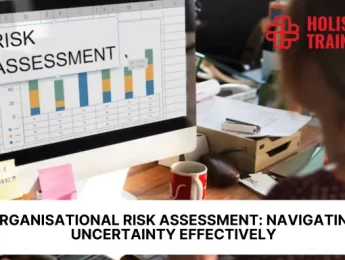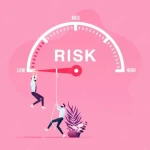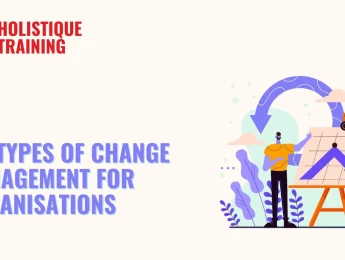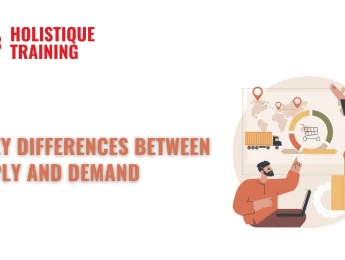- Table of Contents
- Introduction
- What Is Organisational Risk?
- The 4 Categories of Organisational Risks
- Why Do Organisations Take Risks?
- How to Identify Risks at Your Organisation
- What Is Risk Assessment?
- Why Is Risk Assessment Important?
- When to Reassess Risks
- Step-by-step Process of Organisational Risk Assessment
- Tools in the Risk Assessment Process
- The Role of Technology in Organisational Risk Assessment
- Conclusion
Introduction
Embarking on the journey of organisational growth and success is akin to navigating uncharted waters. Just as a ship captain assesses the risks at sea, organisations must meticulously scrutinise the various challenges that may arise on their voyage to prosperity. This is where Organisational Risk Assessment becomes a compass, steering the ship away from potential pitfalls and towards safe harbours.
What Is Organisational Risk?
At its core, organisational risk is the probability of an event occurring that could impact the achievement of an organisation's objectives. These events, often unpredictable, can encompass a broad spectrum, from financial uncertainties to operational disruptions, reputational damage, and even regulatory non-compliance.
The 4 Categories of Organisational Risks
To dissect the complex landscape of organisational risk, we can categorise it into four main domains: strategic, operational, financial, and compliance risks.
1. Strategic Risks
Strategic risks encompass the treacherous waters of decision-making at the highest echelons of an organisation. These risks arise from external factors, often beyond the immediate control of the organisation, and have the potential to alter the strategic trajectory. Picture a ship captain charting a course through shifting tides; strategic risks involve market changes, technological disruptions, and unexpected shifts in competition dynamics.
In the dynamic global marketplace, organisations must remain agile and responsive to emerging trends. Strategic risks force leaders to grapple with questions of innovation, market positioning, and long-term sustainability. It's a delicate dance between seizing opportunities and safeguarding against unforeseen challenges, requiring a keen understanding of the business landscape and an ability to adapt swiftly to change.
2. Operational Risks
Operational risks are the currents that surge through the day-to-day activities of an organisation, impacting its internal processes and systems. These risks can manifest in a myriad of forms, ranging from supply chain disruptions and technological failures to human errors and inefficiencies. Imagine a ship crew contending with machinery malfunctions or unpredictable weather; operational risks demand constant vigilance and proactive management.
Identifying operational risks involves a granular examination of the organisation's internal workings. This includes scrutinising processes, assessing the reliability of systems, and evaluating the competency of personnel. Mitigating operational risks requires a combination of robust internal controls, employee training, and contingency plans to ensure the ship sails smoothly even in turbulent operational waters.
3. Financial Risks
Financial risks plunge into the fiscal depths of an organisation, addressing uncertainties related to monetary aspects. These risks encompass market fluctuations, credit risks, and liquidity challenges that can impact the organisation's financial health. Analogous to a ship navigating through unpredictable economic storms, financial risks necessitate a judicious approach to resource management and financial planning.
Market volatility, currency fluctuations, and economic downturns are inherent aspects of the financial landscape. Organisations must deploy risk mitigation strategies, such as diversifying investments, hedging against currency risks, and maintaining robust financial reserves. A vigilant finance team acts as the navigator, steering the organisation through the intricate channels of financial uncertainties.
4. Compliance Risks
In the sea of organisational risks, compliance risks emerge from the intricate web of laws and regulations governing industries. Statistics show that among risk executives, 35% identify compliance and regulatory risk, alongside other operational risks, as the primary threat hindering their company's ability to foster growth. Non-compliance can lead to legal ramifications, financial penalties, and severe reputational damage. Think of compliance risks as the navigational rules governing the ship's journey – deviating from these rules can lead to perilous consequences.
Staying abreast of regulatory changes, ensuring adherence to industry standards, and fostering a culture of compliance are essential for mitigating this category of risk. Regular audits, training programs, and the establishment of robust governance structures serve as the navigational aids, ensuring the ship sails within the safe confines of legal and ethical waters.
While each category of risk may be distinct, they are not isolated entities. The currents of strategic, operational, financial, and compliance risks intertwine, creating a complex network that requires a holistic approach to risk management. A successful navigation through these diverse waters involves not only identifying and mitigating risks within each category but also understanding how they interact and influence one another.
As organisational leaders set sail into the unpredictable sea of business, comprehending the multifaceted nature of these risks becomes paramount. The ability to navigate through strategic uncertainties, operational challenges, financial fluctuations, and compliance complexities is the hallmark of a resilient and forward-thinking organisation. By acknowledging the diverse categories of organisational risks, leaders can equip themselves with the tools needed to sail confidently towards success in an ever-evolving business environment.
Why Do Organisations Take Risks?
Risk-taking is inherent in the DNA of progressive organisations. Without venturing into the unknown, growth and innovation become stagnant. Organisational risk-taking is not about blind leaps, but rather a calculated dance on the tightrope of uncertainty. It allows for the exploration of new markets, adoption of cutting-edge technologies, and the pursuit of strategic opportunities that can propel the organisation forward.
How to Identify Risks at Your Organisation
Identifying risks requires a holistic understanding of the organisation's internal and external environment. Here are key strategies to consider:
1. Stakeholder Engagement
Stakeholders, much like the crew aboard a ship, possess valuable insights into the intricacies of the organisation. Engaging with employees, customers, suppliers, and other stakeholders can reveal perspectives that may go unnoticed in the boardroom. Conducting regular feedback sessions, surveys, and open forums creates a collaborative environment where potential risks can be brought to the forefront. After all, those on the front lines often have firsthand knowledge of operational challenges and emerging issues.
Incorporating diverse viewpoints provides a panoramic view of potential risks. It's akin to having a multitude of lookout points on a ship, each offering a unique vantage to spot potential obstacles on the organisational horizon.
2. SWOT Analysis
A SWOT analysis is the organisational equivalent of creating a detailed map before embarking on a journey. By systematically examining internal strengths and weaknesses alongside external opportunities and threats, organisations gain a comprehensive understanding of their position in the market.
Strengths and weaknesses illuminate the internal workings, shedding light on areas that may be susceptible to operational or strategic risks. Opportunities and threats, on the other hand, serve as beacons for potential market shifts and external factors that may impact the organisation. The SWOT analysis lays the groundwork for a risk-aware culture by fostering a proactive mindset among the leadership and employees.
3. Scenario Planning
In the unpredictable sea of business, scenario planning is a powerful tool for risk identification. This involves envisioning various scenarios that could unfold, from economic downturns to technological disruptions, and assessing the associated risks. This proactive approach enables organisations to develop contingency plans and strategies for navigating through turbulent waters.
Scenario planning is not about predicting the future with absolute certainty but preparing for a range of possibilities. It's akin to a ship captain anticipating adverse weather conditions and adjusting the course to ensure a safe journey.
4. Data Analysis
In today's data-driven landscape, organisations have access to a vast sea of information. Leveraging data analytics tools can unveil patterns, trends, and anomalies that may indicate potential risks. And organisations are starting to realise its importance. In fact, according to the PwC Pulse Survey, as cited by Procurement Tactics, a significant 65% of corporations are set to boost their investments in data analytics. Whether it's analysing financial data for signs of market volatility or scrutinising operational metrics for inefficiencies, data analysis serves as a compass guiding organisations through the vast ocean of information.
Advanced analytics tools equipped with machine learning capabilities can even predict potential risks by identifying correlations and patterns that may elude human analysis. Data becomes the wind in the sails, propelling the organisation forward with informed decision-making.
A Holistic Approach to Risk Identification
Effective risk identification is not a one-time activity; it's an ongoing process that requires a holistic approach. By combining stakeholder engagement, SWOT analysis, scenario planning, and data analysis, organisations can create a dynamic risk identification framework. Much like a ship equipped with state-of-the-art navigation instruments, an organisation armed with these tools gains the foresight needed to navigate through the complexities of the business sea.
As the business landscape evolves, so too must the methods of risk identification. Organisations that embrace a proactive and dynamic approach to identifying risks position themselves as captains of their fate, skillfully steering through the unpredictable currents of the business environment. In the ever-changing seas of business, the ability to uncover hidden risks is the compass that ensures organisations sail towards success with resilience and foresight.
What Is Risk Assessment?
Risk assessment is the systematic process of evaluating the potential risks that an organisation may face. It involves identifying, analysing, and prioritising risks to make informed decisions about risk mitigation and management.
Table 1: Key metrics for organisational risk assessment
Metric | Description | Significance |
Risk Identification | Unveiling potential threats and challenges. | Essential for understanding the organisational landscape. |
Risk Likelihood and Impact | Evaluating the probability and potential effects. | Guides prioritisation and resource allocation. |
Mitigation Strategies | Developing proactive measures to reduce risks. | Enhances preparedness and resilience. |
Compliance Adherence | Ensuring alignment with legal and ethical standards. | Safeguards against legal consequences and reputational damage. |
Monitoring and Review | Continuous oversight of risk landscape changes. | Enables adaptive responses and ongoing improvement. |
Why Is Risk Assessment Important?
The importance of risk assessment cannot be overstated. It serves as the compass, providing direction amidst uncertainty. Here's why it holds a pivotal role in organisational strategy:
Proactive Risk Management
At the heart of risk assessment lies the essence of proactive risk management. Instead of reacting to crises as they unfold, organisations armed with a robust risk assessment strategy can identify potential risks in their nascent stages. It's akin to a skilled navigator steering a ship away from treacherous waters before the storm hits.
Proactivity is not only about avoiding risks but also seizing opportunities. By understanding potential challenges and opportunities through risk assessment, organisations can chart a course that maximises their strategic advantage. Proactive risk management fosters agility and adaptability, crucial traits in an ever-evolving business landscape.
Resource Allocation
Organisations operate with finite resources, be it financial, human, or technological. Risk assessment acts as a compass, guiding leaders in allocating these resources judiciously. By identifying and prioritising risks based on their potential impact, organisations can channel resources where they are needed most.
Efficient resource allocation is a pivotal benefit of risk assessment. Instead of spreading resources thinly across all potential risks, organisations can focus on addressing the most critical threats. This targeted approach ensures that the ship is well-equipped to weather the most formidable storms while optimising its journey towards strategic goals.
Strategic Decision-Making
In the dynamic seas of business, strategic decision-making is the helm that determines the direction of the organisation. Risk assessment provides the navigational charts for leaders to make informed decisions. Understanding the potential risks and rewards associated with various courses of action enables leaders to plot a strategic course that aligns with the organisation's objectives.
Informed decision-making extends beyond the C-suite; it permeates throughout the organisation. Employees armed with an awareness of potential risks become proactive contributors to risk mitigation strategies. This collective intelligence ensures that the entire crew is aligned in steering the ship towards success.
Reputation Management
In the age of instant communication and social media, reputation is a fragile yet invaluable asset. A single adverse event or a perceived failure in risk management can tarnish an organisation's image. Risk assessment plays a crucial role in safeguarding reputation by identifying and mitigating risks that could lead to reputational damage.
Proactively addressing risks related to product quality, ethical practices, or customer satisfaction not only prevents negative publicity but also enhances the organisation's credibility. A positive reputation becomes a sturdy anchor, fostering trust among stakeholders and customers alike.
Regulatory Compliance
Adherence to laws and regulations is a fundamental expectation for any organisation. Failure to comply can result in legal consequences, fines, and damage to the organisational reputation. Risk assessment ensures that an organisation's sails are set in alignment with legal requirements, reducing the likelihood of regulatory non-compliance.
Beyond avoiding penalties, compliance with regulations can open doors to new opportunities. Many industries require organisations to meet specific standards, and a commitment to compliance can be a differentiator in the market, building trust with customers and partners.
In the unpredictable expanse of the business sea, risk assessment is the compass, the map, and the lookout tower combined. It empowers organisations to navigate with confidence, proactively addressing challenges, capitalising on opportunities, and safeguarding their reputation. As the seas of business continue to evolve, risk assessment remains an essential tool for organisations to not only survive but thrive in the midst of uncertainty. In its strategic importance lies the promise of resilience, adaptability, and sustained success.
When to Reassess Risks
Organisational landscapes are dynamic, with changes occurring at a rapid pace. Hence, regular reassessment of risks is imperative. The following triggers should prompt a reevaluation:
A) Major Organisational Changes
Organisations are not stagnant entities; they evolve, grow, and sometimes undergo significant structural changes. Mergers, acquisitions, or substantial shifts in the organisational structure can introduce new dynamics and risks. When the foundational landscape shifts, it's time to recalibrate the risk assessment.
Major changes can alter the organisation's risk profile, introducing novel challenges or opportunities. By reassessing risks in the wake of significant organisational shifts, leaders ensure that risk management strategies remain aligned with the new course charted by the organisation.
B) External Environmental Shifts
The business environment is a volatile sea influenced by external factors such as economic conditions, technological advancements, and geopolitical events. Changes in the market or industry landscape can significantly impact the risks an organisation faces. It's akin to adjusting the sails to catch the winds of change.
Regularly monitoring external factors and reassessing risks in light of these changes is imperative. Organisations must remain agile, ready to recalibrate their risk mitigation strategies based on the evolving external environment. This ensures that the ship stays on course despite the unpredictable currents.
C) Regulatory Updates
Regulations are the navigational markers that define the permissible boundaries for organisational conduct. Yet, regulatory landscapes are not static; they evolve in response to societal changes, technological advancements, and global events. Organisations must reassess risks whenever there are updates or changes in relevant regulations.
Staying compliant is not just about avoiding legal consequences; it's also about maintaining ethical standards and fostering trust with stakeholders. Regular reassessment ensures that the organisation's practices align with the latest regulatory requirements, preventing potential legal and reputational pitfalls.
D) Technological Advances
In the digital age, technology is both a catalyst for innovation and a source of new risks. The rapid pace of technological advances introduces cyber threats, data privacy concerns, and operational vulnerabilities. As organisations embrace new technologies, reassessing risks becomes imperative.
The integration of artificial intelligence, cloud computing, and other cutting-edge technologies can reshape the risk landscape. Regular assessments ensure that the organisation's cybersecurity measures, data protection protocols, and overall technology strategy remain robust and aligned with emerging risks.
E) Significant Events or Crises
The occurrence of significant events or crises, whether internal or external, can have a profound impact on an organisation's risk landscape. These events may include natural disasters, economic downturns, or operational failures. In the aftermath of such occurrences, it's crucial to reassess risks and evaluate the effectiveness of existing risk mitigation strategies.
Crises often reveal vulnerabilities that may have been overlooked in routine assessments. Reassessing risks in the aftermath of a crisis provides valuable insights for fortifying the organisation against similar events in the future. It's a process of learning from experience and building resilience.
The journey of risk assessment is not a one-time expedition but an ongoing voyage. It's about understanding that the seas are ever-shifting, and what was a safe route yesterday may pose risks tomorrow. By establishing a culture of continuous assessment and adaptability, organisations can navigate the dynamic tides with resilience and foresight. In the realm of risk management, the ability to reassess and adjust the course is the compass that guides organisations towards sustained success.
Step-by-step Process of Organisational Risk Assessment
A meticulous risk assessment involves a systematic process. Let's break down the steps:
#1 Establish the Context
The first step in the risk assessment process is to establish the context. This involves defining the scope, objectives, and criteria for the assessment. Clearly outlining the boundaries ensures that the assessment focuses on relevant areas and aligns with the strategic goals of the organisation. Like setting the coordinates for a ship's journey, establishing the context provides a clear starting point for the risk assessment voyage.
#2 Identify Risks
Identification is the compass that points towards potential risks. Utilise various methods, including brainstorming sessions, data analysis, stakeholder interviews, and scenario planning, to unveil potential risks. This step involves tapping into the collective wisdom of the organisation, bringing to light both the obvious and subtle threats that may impact objectives. Think of it as navigating through waters to unveil hidden shoals beneath the surface.
#3 Assess Risks
Once risks are identified, the next step is to assess them. This involves evaluating the likelihood and potential impact of each identified risk. The assessment provides a depth gauge, helping prioritise risks based on their significance. It's essential to use a structured approach, such as a risk matrix, to quantify the risks accurately. Assessing risks allows organisations to distinguish between minor ripples and potential tidal waves, enabling effective prioritisation.
#4 Mitigate Risks
With a clear understanding of risks, the next phase is to develop and implement strategies for risk mitigation. Mitigation involves taking proactive measures to reduce the likelihood or impact of identified risks. This could include implementing control measures, enhancing internal processes, or developing contingency plans. It's the equivalent of adjusting the ship's course to avoid stormy weather, ensuring a safer and smoother journey.
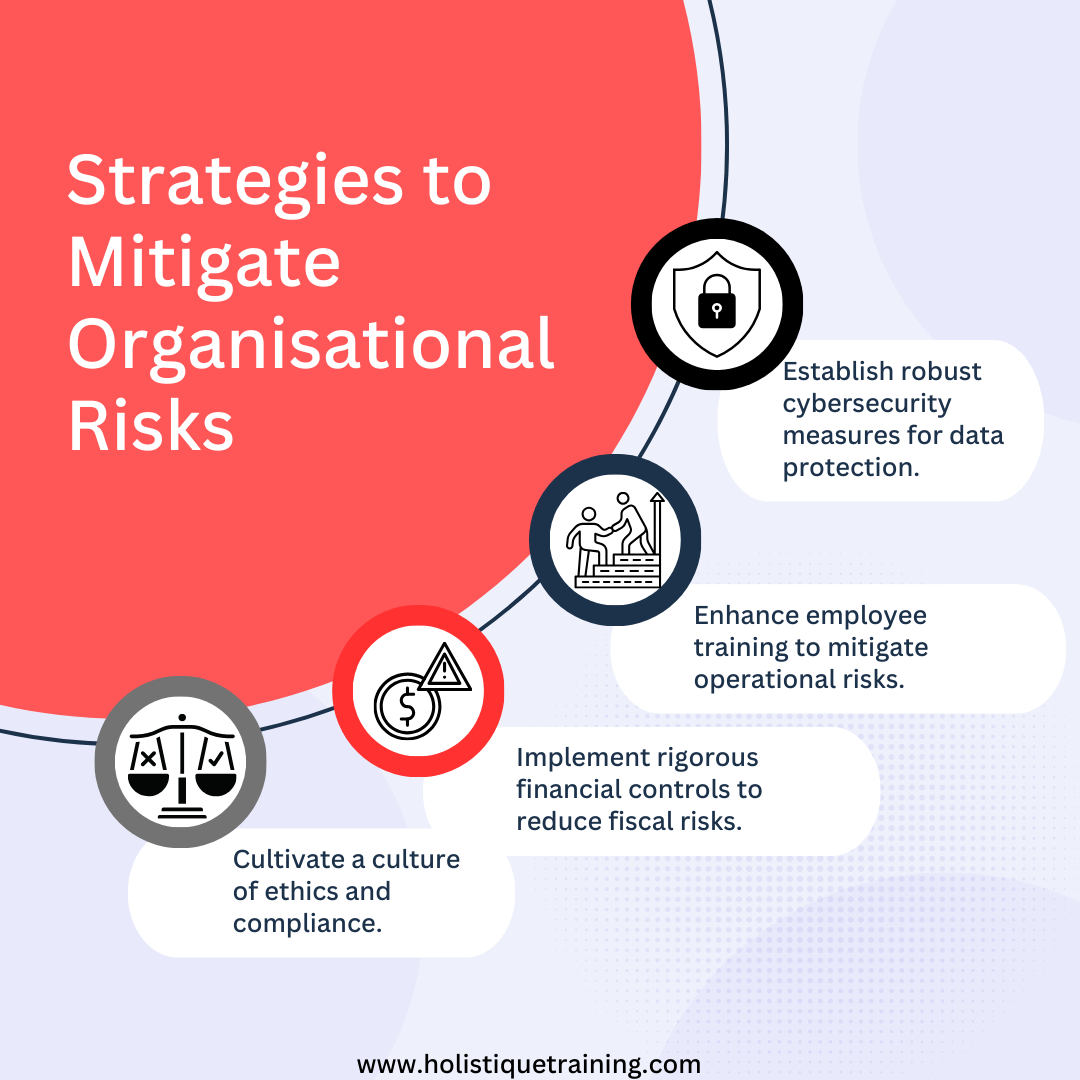
#5 Monitor and Review
Risk management is not a one-time effort but an ongoing process. Regular monitoring ensures that the risk landscape is continuously on the organisational radar. It involves tracking key risk indicators (KRIs) and staying attuned to changes in the internal and external environment. Regular reviews, conducted at predefined intervals, allow for adjustments to the risk management strategy based on changing circumstances. Monitoring and reviewing serve as the compass that keeps the ship on the right course despite the ever-shifting winds.
Tools in the Risk Assessment Process
Several tools aid organisations in the risk assessment process:
Risk Registers
A risk register is the foundational map that organisations use to navigate the sea of risks. It's a comprehensive log that captures details about identified risks, including their potential impact, likelihood, and mitigation strategies. Like a captain meticulously plotting courses on a map, organisations use risk registers to centralise risk-related information. This tool provides a holistic view, allowing decision-makers to prioritise risks and allocate resources effectively.
Risk registers evolve as new risks emerge or existing ones change in nature. Regular updates ensure that the map stays current, guiding the organisation through the dynamic landscape of risks.
Risk Matrices
Risk matrices are visual tools that help organisations assess and prioritise risks based on their likelihood and impact. Think of them as the radar screen that displays potential risks in a graphical format. By plotting risks on a matrix, organisations can easily identify high-priority risks that require immediate attention.
The visual nature of risk matrices simplifies complex information, making it accessible to stakeholders at various levels. This tool empowers decision-makers to allocate resources judiciously, focusing efforts on addressing the most critical risks.
Scenario Analysis
Scenario analysis is the tool that allows organisations to anticipate potential storms on the horizon. It involves envisioning different scenarios that could unfold and assessing the associated risks. Much like a weather forecast, scenario analysis provides organisations with insights into the range of possibilities they may encounter.
By considering various scenarios, organisations can develop contingency plans and strategies to navigate through different conditions. Scenario analysis is the compass that helps leaders steer the ship with foresight, preparing for a spectrum of potential challenges.
Key Risk Indicators (KRIs)
Key Risk Indicators (KRIs) serve as the early warning system for potential risks. These are quantifiable metrics that act as the ship's alarms, alerting organisations to emerging threats. By tracking KRIs, organisations can detect signs of risk before they escalate, allowing for timely intervention.
KRIs vary based on the nature of the risks being monitored. For example, in cybersecurity, KRIs might include the number of security incidents or the frequency of data breaches. These metrics provide real-time insights, enabling organisations to respond swiftly to mitigate or avert potential risks.
The Role of Technology in Organisational Risk Assessment
In the digital era, technology plays a crucial role in enhancing the effectiveness of risk assessment. Here's how:
1. Data Analytics
In the digital era, data is the lifeblood of organisations. Data analytics serves as the compass that enables organisations to navigate through the vast sea of information. Advanced analytics tools can process large datasets, identifying patterns, trends, and anomalies that may indicate potential risks.
By leveraging data analytics, organisations can uncover hidden insights, allowing for a more nuanced understanding of the risk landscape. Whether it's analysing customer behaviour, market trends, or internal processes, data analytics provides the means to make informed decisions and identify potential risks before they escalate.
2. Artificial Intelligence (AI)
Artificial Intelligence (AI) acts as the navigator that charts predictive courses through the uncharted waters of risk. AI systems can analyse historical data, identify correlations, and predict potential risks based on patterns. Machine learning algorithms learn from past incidents, enhancing their ability to forecast future risks.
AI is particularly valuable in identifying emerging risks that may not be apparent through traditional methods. By augmenting human decision-making with AI-driven insights, organisations can stay ahead of the curve and proactively address potential threats.
3. Risk Management Software
Dedicated risk management software is the technology that streamlines the entire risk assessment process. These platforms provide centralised hubs for risk-related activities, including risk identification, assessment, mitigation, and monitoring. Much like a GPS system, risk management software offers a clear and organised roadmap for navigating the risk landscape.
These tools facilitate collaboration among stakeholders, enable real-time updates to risk registers, and provide reporting functionalities that support strategic decision-making. Risk management software enhances efficiency and transparency, ensuring that the entire organisation is aligned in its approach to risk assessment.
4. Blockchain Technology
In sectors where transparency, data integrity, and traceability are paramount, blockchain technology serves as the anchor, safeguarding against the choppy waters of fraud and manipulation. Blockchain creates a tamper-proof and decentralised ledger of transactions, ensuring the integrity of data. This is particularly relevant in financial transactions, supply chain management, and areas where trust is foundational.
By leveraging blockchain, organisations can enhance the reliability of data, reduce the risk of fraudulent activities, and build trust with stakeholders. It's a technological moat that fortifies the organisation against risks associated with data manipulation and unauthorised access.
5. Cybersecurity Measures
As organisations traverse the digital seas, the risk of cybersecurity threats looms large. In fact, new research by ISACA reveals that 52% of cybersecurity professionals report a surge in cyber-attacks compared to the previous year. Surprisingly, despite this escalation, a mere 8% of organisations perform monthly cyber risk assessments, and only 40% conduct these evaluations annually. Technology plays a pivotal role in fortifying the ship against digital storms. Cybersecurity measures, including firewalls, intrusion detection systems, and encryption, act as the defensive mechanisms that protect sensitive data and systems.
Regular vulnerability assessments and penetration testing, powered by technology, help organisations identify weaknesses in their digital infrastructure. These measures are essential for mitigating risks associated with data breaches, ransomware attacks, and other cybersecurity threats.
Adaptability in the Digital Age
The role of technology in organisational risk assessment extends beyond specific tools; it embodies a mindset of adaptability and agility in the digital age. The integration of technology allows organisations to not only identify and mitigate risks effectively but also to foster a culture of continuous improvement.
As technology continues to advance, organisations must stay abreast of the latest developments to remain resilient in the face of evolving risks. The role of technology in risk assessment is not a static one; it's a dynamic force that empowers organisations to sail confidently through the digital seas, embracing the opportunities and challenges that the future holds. In the digital voyage of risk management, technology is the compass that guides organisations towards strategic success in a rapidly changing world.
Conclusion
In the grand tapestry of organisational success, risk assessment is the thread that weaves through every decision, every strategy, and every action. Embracing risk is not an act of recklessness but a calculated and informed approach to steer through the complex waters of the business world. As organisations continue to evolve, those equipped with robust risk assessment strategies will not merely survive; they will thrive in the face of uncertainty. So, set sail with confidence, for in the heart of risk lies the promise of innovation, growth, and enduring success.


